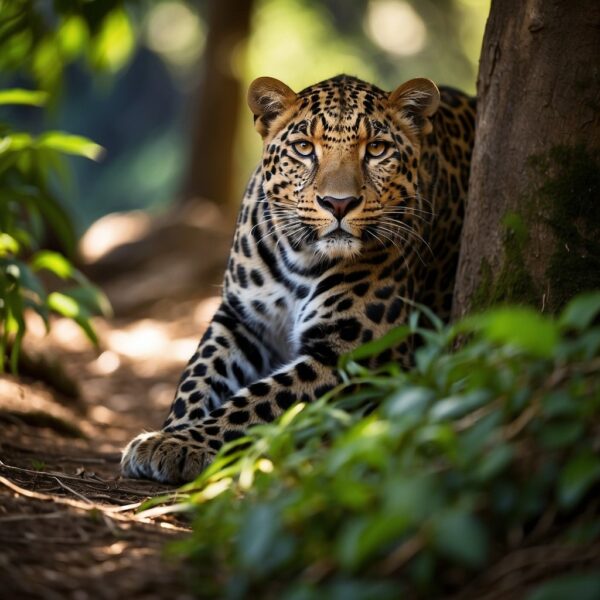
International Leopard Day: cats Connect Our World
International Leopard Day is a significant occasion dedicated to the celebration and conservation of one of the most enigmatic big cats—the leopard, scientifically known as Panthera pardus. Marked annually on the 3rd of May, the day provides an opportunity for people across the globe to increase awareness about the plight of these animals and the challenges they face in the wild. By highlighting the issues, the day aims to foster a deeper understanding and appreciation of leopards and their ecological importance.
The versatility and adaptability of leopards are unparalleled among the big cats, enabling them to inhabit a diverse range of environments. Unfortunately, despite their adaptability, leopards confront numerous threats, including habitat loss, poaching, and conflict with humans, which have led to a decline in their populations in many areas. The observance of International Leopard Day serves as an annual reminder of the urgency to protect these magnificent animals and their natural habitats, ensuring their survival for future generations.
Key Takeaways
- International Leopard Day is observed on May 3 to celebrate leopards and raise global awareness about their conservation.
- Leopards face significant threats such as habitat loss and poaching, which necessitate international attention and action.
- The day emphasizes the importance of protecting leopard habitats and encourages participation in conservation efforts.
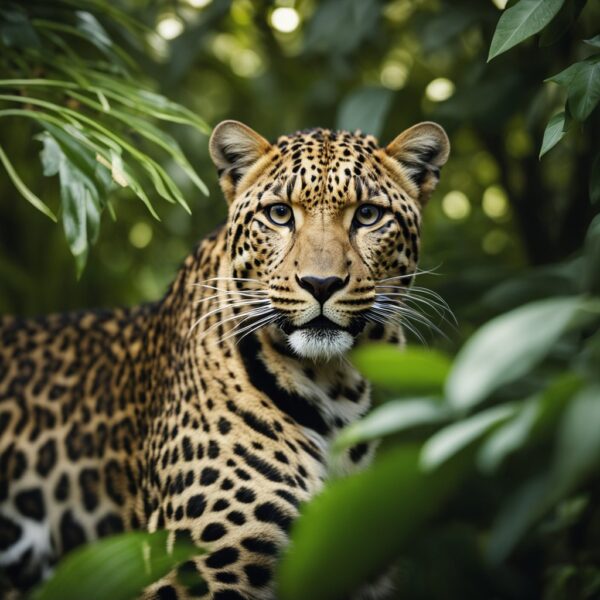
The Significance of International Leopard Day
International Leopard Day serves as a platform to celebrate and raise awareness about the conservation of leopards. It highlights the challenges these species face and the efforts required to ensure their survival.
History and Origin
International Leopard Day was first acknowledged in 2023, marking a significant step towards leopard conservation. The event brought together a myriad of individuals, including researchers, conservationists, and students, with the common goal of directing the world’s attention to the leopard, scientifically known as Panthera pardus.
Objectives and Goals
The objectives and goals of International Leopard Day center around two main focus areas:
- Awareness Raising:
- To educate the public about the leopard’s current conservation status.
- To illuminate the threats that diminish their populations.
- Promote Conservation:
- To advocate for strategies and actions that support the protection and well-being of leopards.
- To highlight successful conservation efforts and research findings from previous years, including 2023 and looking forward to 2024 and 2025 and beyond.
Each year, the celebration serves as a reminder of leopards’ ecological significance and the collective responsibility to safeguard their future.
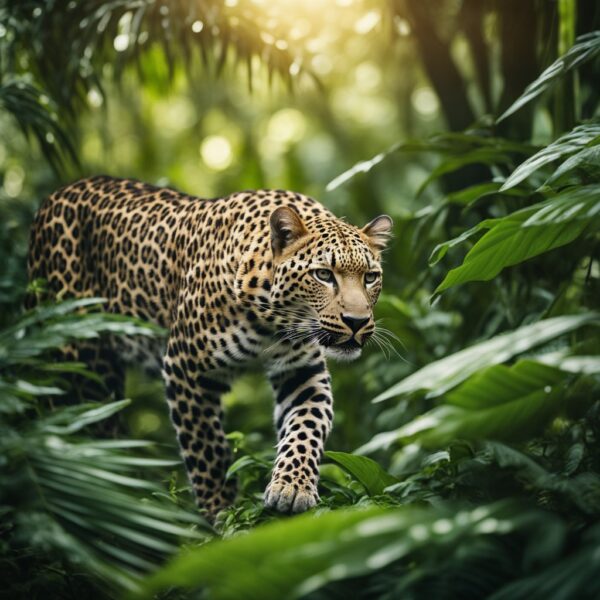
Leopard Habitats and Distribution
Leopards are one of the most widely distributed big cats, with habitats that vary greatly across their range. This section explores the specifics of their geographic distribution, the types of habitats they require, and the key populations in Asia and Africa.
Geographic Range
Leopards (Panthera pardus) have the broadest geographic distribution among wild cats. They are native to over 70 countries across Africa and Eurasia. In Africa, they are mainly found in sub-Saharan regions, while in Asia, their presence stretches from the Middle East, through India and China, to the Far East, reaching into parts of Central Asia.
Habitat Requirements
Leopards are adaptable creatures, capable of living in various types of habitats. They require an environment that provides sufficient cover and a steady food supply. Their habitats include:
- Grasslands
- Woodlands
- Forests
- Mountainous landscapes
These environments not only offer camouflage for hunting and shelter but also enable the leopard to establish a territory.
Populations in Asia and Africa
In Asia, leopard subspecies such as the Persian leopard occupy the Caucus region and areas surrounding the Caspian Sea, and the Indian leopard is spread across the Indian subcontinent. Meanwhile, African leopards inhabit a variety of terrains across sub-Saharan Africa, from rainforests to savannas.
China’s leopards are primarily found in the nation’s lesser-populated, forested regions. Distinct subspecies of leopards, including the Amur leopard, are sparsely distributed in the temperate forests of the Russian Far East and parts of northeastern China.
In comparison, India’s leopards are relatively widespread, albeit with populations that are often fragmented and residing in close proximity to human settlements. The adaptability of leopards in India showcases their ability to survive even as their natural habitats undergo significant changes.
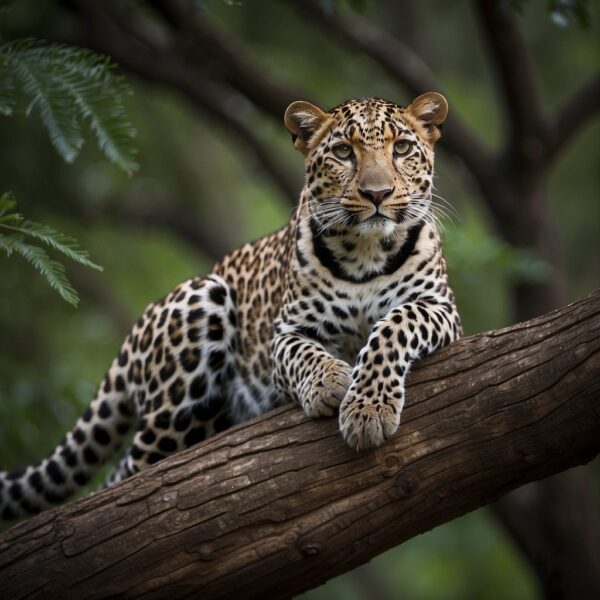
Conservation Challenges
As leopards grapple with multiple challenges that threaten their survival, the efforts toward their conservation must address these critical issues. Human activities and habitat encroachment are at the forefront of these concerns, leading to a declining population that is recognized in various statuses on the IUCN Red List.
Threats to Leopard Survival
Leopards face several direct threats that jeopardize their existence:
- Poaching: Despite legal protection, illegal hunting for trade in skins and body parts persists.
- Habitate Loss: Expanding human settlements, agriculture, and deforestation have significantly reduced their natural habitats.
- Prey Depletion: Overhunting by humans depletes prey populations, leaving leopards with insufficient food sources.
- Human-Wildlife Conflict: As their habitats overlap with human domains, leopards occasionally attack livestock, prompting retaliatory killings.
Impact of Human Activities
Human activities have a profound impact on leopard populations:
- The expansion of agriculture and urban areas leads to loss of habitat.
- Leopards are caught in the crosshairs of human-wildlife conflict, often resulting in fatalities for these big cats.
- Climate change exacerbates habitat changes and prey availability, indirectly affecting leopard populations.
Status on the IUCN List
The IUCN Red List details the status of leopard subspecies:
- Panthera pardus (species which includes all leopard subspecies) is listed as Vulnerable.
- Certain subspecies, like the Javan leopard (Panthera pardus melas), are classified as Critically Endangered.
- Others, such as the Persian leopard (Panthera pardus saxicolor), are classified as Endangered.
- The varying status across subspecies highlights localized threats and conservation needs.
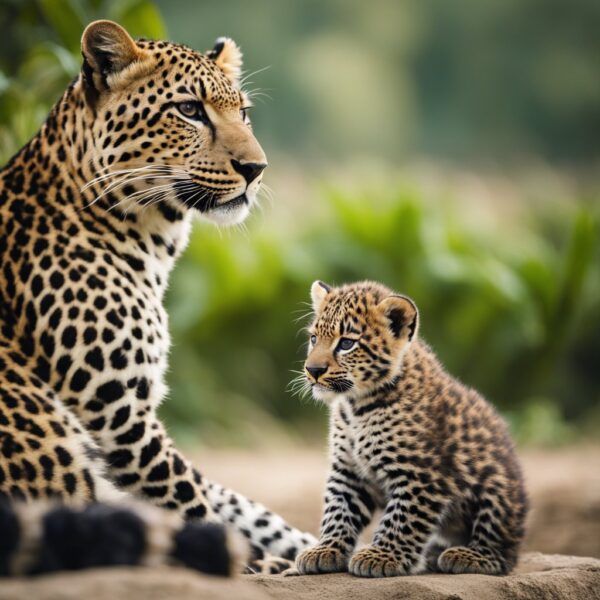
Conservation and Protection Efforts
International Leopard Day serves as a focal point for raising awareness about the importance of leopard conservation and protection. Effective strategies, the establishment of protected areas, and community engagement are key to ensuring these big cats continue to grace our planet.
Conservation Strategies
Conservationists and researchers have developed various strategies to safeguard leopard populations. These include:
- Anti-Poaching Initiatives: Rigorous anti-poaching measures are enacted to deter illegal hunting and trade, with conservation organizations working closely with law enforcement agencies.
- Habitat Restoration: Efforts to restore and connect fragmented habitats are crucial in providing leopards with the territories they need to thrive.
- Scientific Research: Ongoing research provides critical data that inform conservation actions, such as understanding leopard behavior and tracking population dynamics.
Role of Protected Areas
Protected areas play a vital role in the protection and preservation of leopard habitats:
- National Parks and Reserves: Designation of national parks and wildlife reserves offers leopards a refuge from human conflicts and development.
- Biodiversity Corridors: The establishment of corridors between protected areas ensures genetic diversity by allowing leopards to move freely and interbreed.
Community Engagement
Local communities are essential allies in leopard conservation efforts:
- Education Programs: Initiatives to educate local populations about the benefits of leopard conservation help reduce human-leopard conflicts.
- Incentive Schemes: Providing incentives for communities living in proximity to leopard habitats encourages the protection of these animals and reduces poaching incidents.
Participating in International Leopard Day
International Leopard Day offers various avenues for individuals to engage and support efforts to preserve and understand leopards. They can contribute by getting involved in activities, accessing educational resources, and supporting conservation groups.
How to Get Involved
Individuals can participate in International Leopard Day by promoting awareness through social media channels. They can share facts about leopards, their habitats, and the challenges they face due to human activities and environmental changes. Additionally, enthusiasts can attend or organize fundraising events that contribute to leopard conservation.
- Social Media Campaigns: Utilize hashtags like #InternationalLeopardDay and share posts to educate your following.
- Fundraising Events: Attend or host local events in support of leopard conservation.
Educational Activities and Resources
Educational institutions and conservation organizations often provide resources to enhance public knowledge about leopards. People can access these materials to learn about leopard biology, ecology, and conservation efforts.
- Webinars and Workshops: Participate in online sessions focusing on leopard conservation.
- Informational Brochures and Toolkits: Download materials for self-education and to distribute within your community.
Supporting Conservation Organizations
Support can be extended to conservation organizations by making donations or volunteering. Contributions aid these groups in their ongoing research, habitat preservation, and community engagement initiatives.
- Donations: Make a direct contribution to a verified conservation group dedicated to leopards.
- Volunteering: Offer your time and skills to assist with conservation projects, either remotely or in the field.
Frequently Asked Questions
International Leopard Day focuses on the conservation of leopards and raises awareness of the challenges they face including habitat loss and illegal wildlife trade.
What activities are commonly associated with International Leopard Day?
International Leopard Day sees various activities such as educational workshops, wildlife conferences, and global advocacy aimed at preserving leopard populations. It is a day for zoological parks, conservationists, and communities to engage in efforts that spotlight the leopard’s conservation status.
How can one participate in International Leopard Day to raise awareness for leopard conservation?
Individuals can participate by supporting leopard conservation organizations, sharing educational materials, and using social media platforms to spread awareness about the importance of protecting leopards.
What is the historical significance of International Leopard Day?
International Leopard Day was established to highlight the plight of leopards worldwide and to encourage actions to support their survival. It serves as a reminder of the importance of conservation and the need to protect these animals from threats.
How does International Leopard Day contribute to the conservation efforts for leopards?
The day contributes to conservation by increasing awareness, generating support for anti-poaching efforts, promoting habitat conservation, and raising funds for research and conservation initiatives.
What are the key threats facing leopards that are highlighted during International Leopard Day?
Key threats to leopards include habitat loss, poaching, human-wildlife conflict, and illegal wildlife trade. International Leopard Day brings these issues to the forefront of public discourse.
How do International Leopard Day and other big cat days, like World Lion Day and International Jaguar Day, differ in focus and objectives?
International Leopard Day specifically brings attention to the conservation issues facing leopards, while World Lion Day and International Jaguar Day similarly highlight the individual challenges and conservation needs of their respective big cat species. Each day supports tailored actions and awareness campaigns for the species in question.